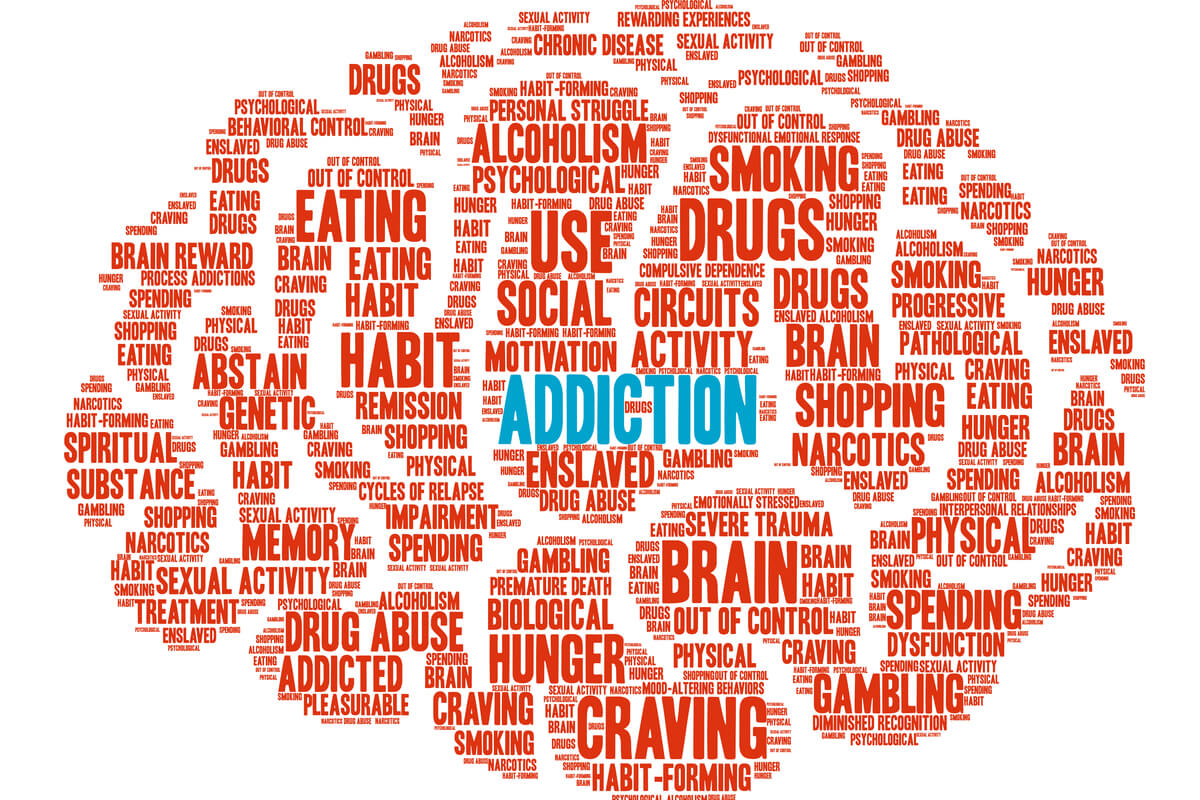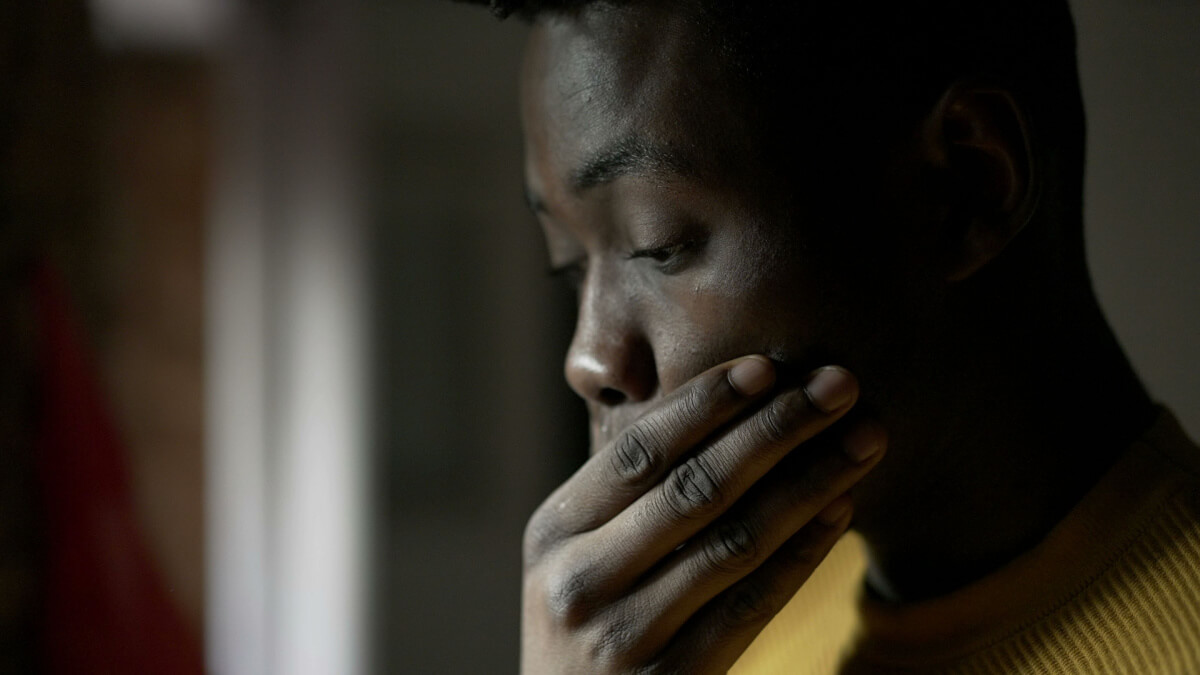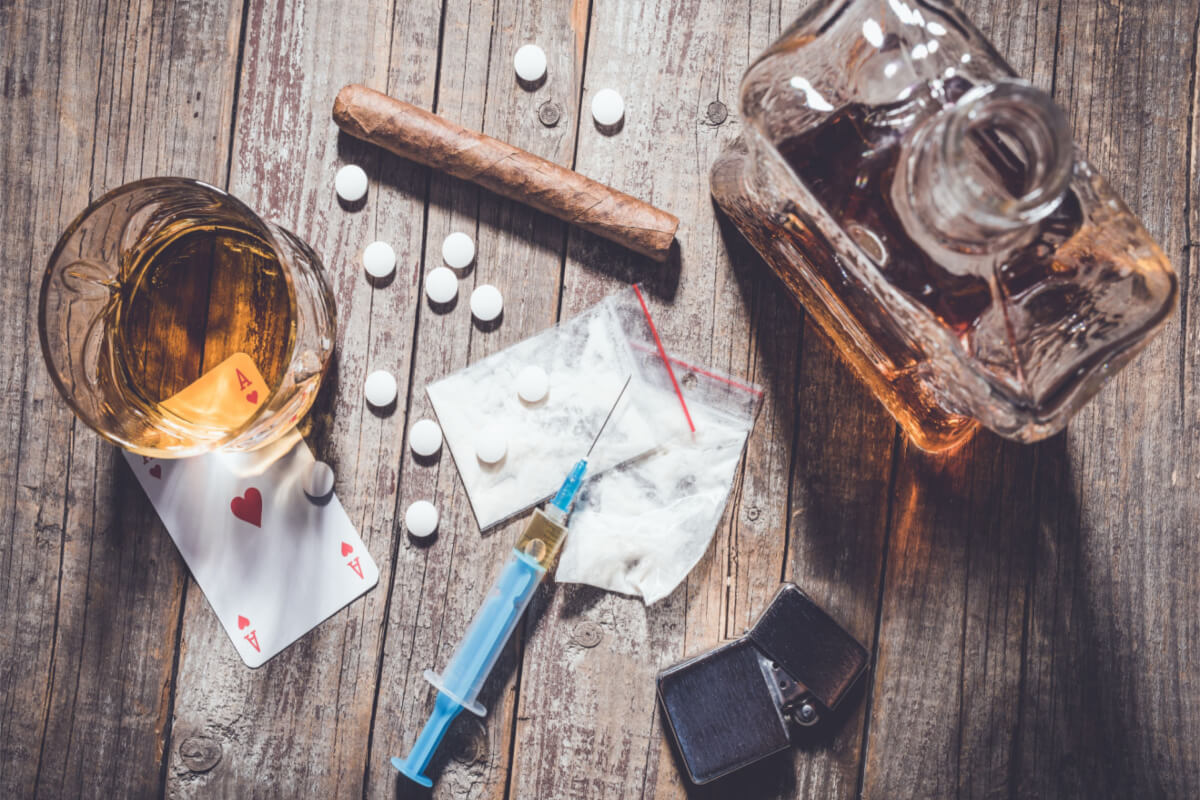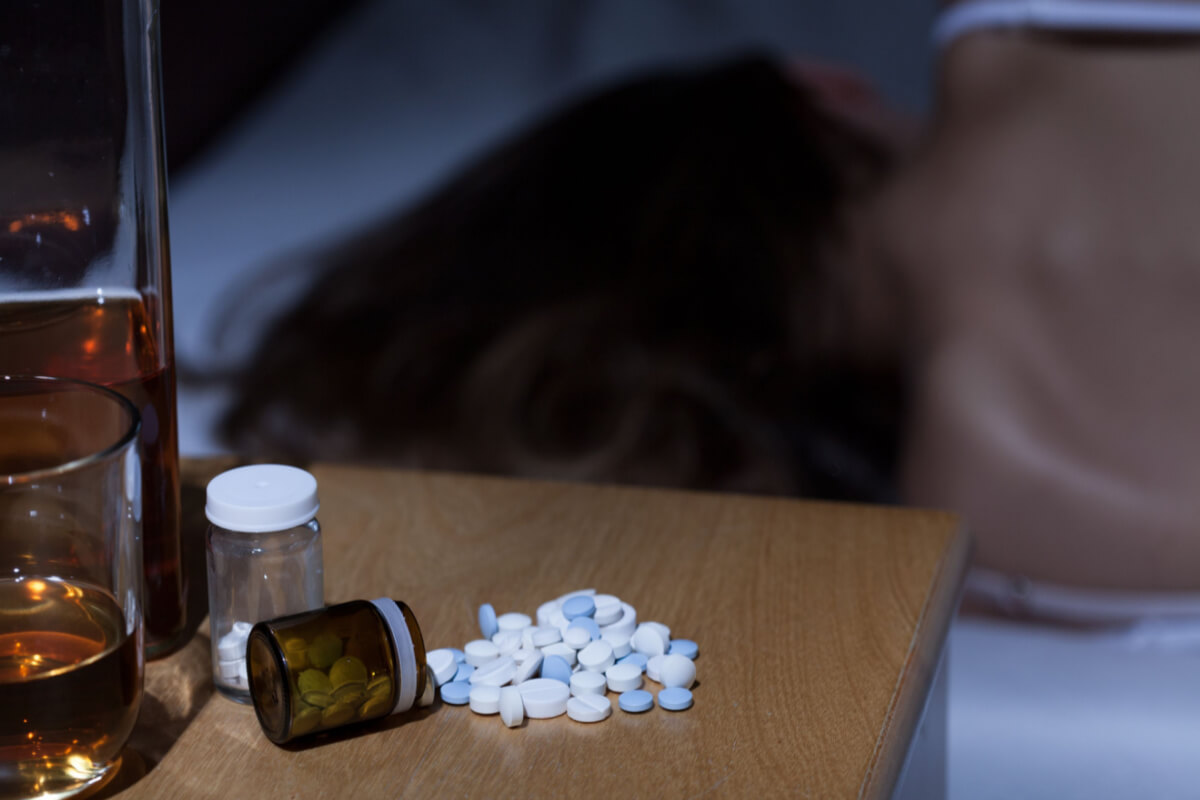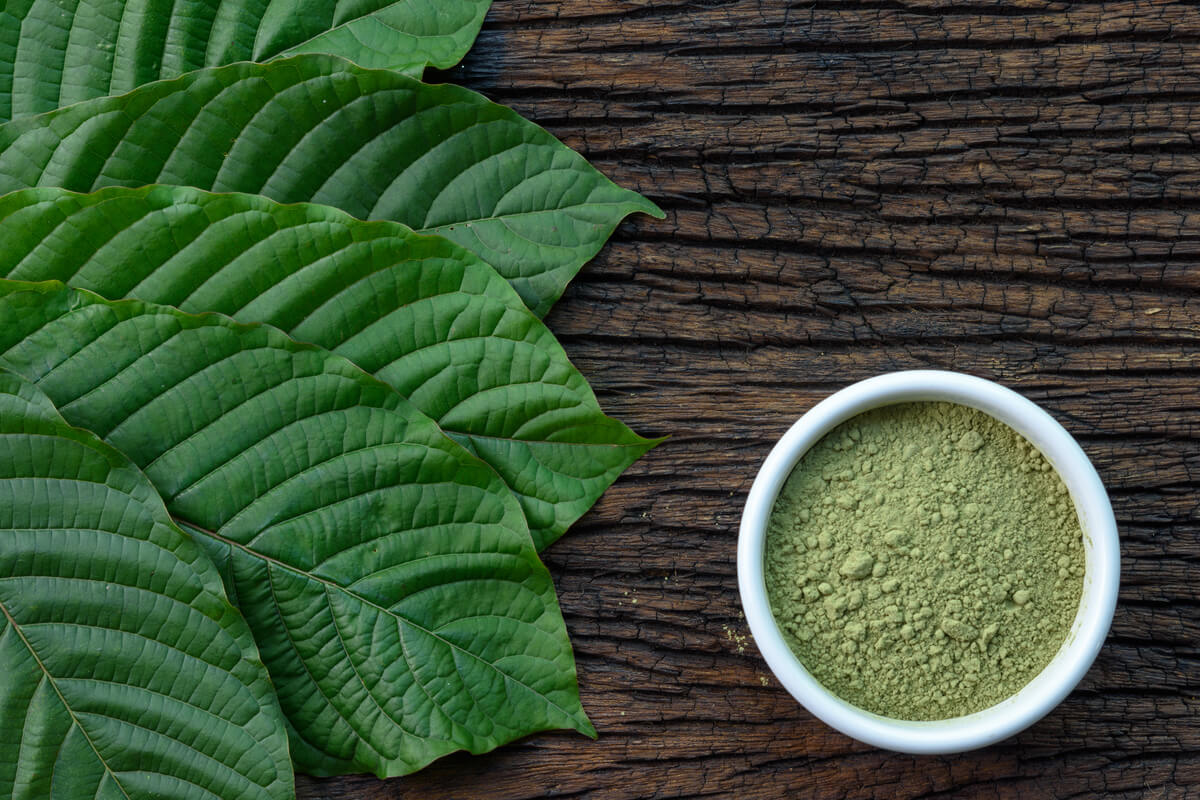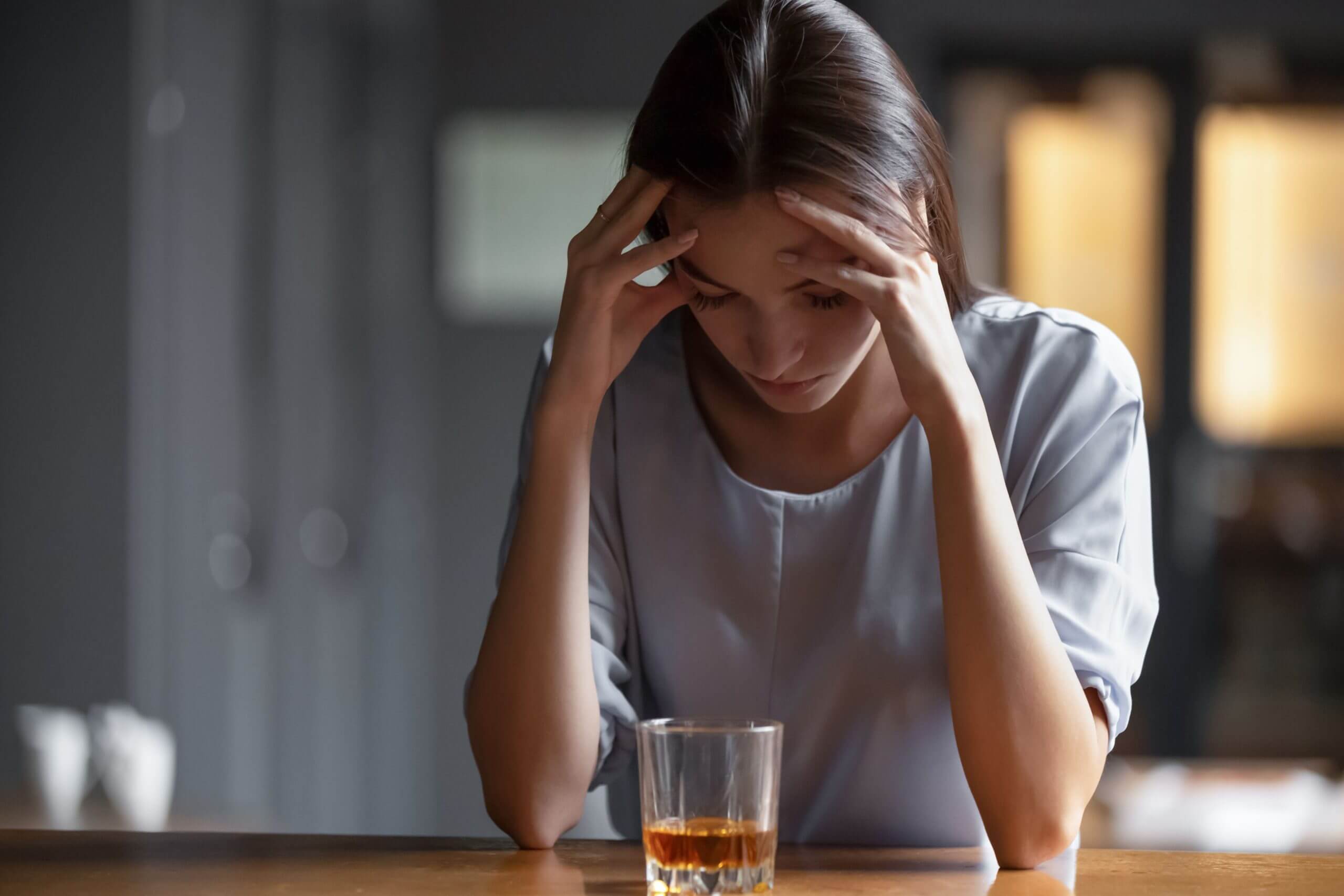
It is exceptionally common for a patient living with post-traumatic stress disorder (PTSD) to also misuse substances, and to develop a substance use disorder (SUD).
According to the U.S. Department of Veterans Affairs, it is estimated that more than 46% of people diagnosed with PTSD will struggle with a SUD at some point in their lives.[1]
Women with PTSD were about 2.5 times more likely to be living with an alcohol use disorder and almost 4.5 times more likely to struggle with drug misuse than women who were not living with PTSD.[1]
Additionally, it is also believed that between 40% and 60% of people living with a substance use disorder have PTSD due to past trauma.[2]
What Is the Connection Between PTSD & Addiction?
There are a few different ways that PTSD and SUD may be connected.
In many cases, PTSD precedes SUD. That is, a person may experience sexual and/or physical trauma during childhood (most common for women) or combat (most common for men) and develop PTSD as a result. Then, in an attempt to manage the symptoms of PTSD, they may turn to drugs and alcohol.[3]
When this becomes their primary coping mechanism, substance use can turn into an addiction that requires treatment as much as the PTSD needs treatment, too.
In other cases, SUD precedes PTSD.[4] Having a SUD increases the risk of trauma through exposure to higher-risk lifestyles, for example. Experiencing or witnessing violent assault becomes more likely. Driving while intoxicated increases the chance of automobile accidents. When a person already living with an addiction to a particular substance is exposed to trauma, and develops PTSD, their SUD issues may worsen even more as they seek to manage the symptoms associated with trauma with that substance.
What Are the Risk Factors for PTSD & SUD?
The primary risk factor for PTSD is exposure to trauma, whether as a victim or as a witness. This can include childhood trauma that was never fully addressed or trauma experienced as an adult. PTSD can occur after the following:[5]
- Sexual assault
- Physical assault
- A severe accident
- Combat
For SUDs, risk factors include the following: [6]
- Genetics (a close relative who experienced SUD)
- Early use of addictive substances
- Childhood trauma
- Untreated mental health issues
It may be more likely for an individual to develop a SUD if they are living with PTSD that goes untreated. They may turn to substances in an effort to cope with symptoms of PTSD.
What Are the Signs of Co-Occurring SUD & PTSD?
Signs of PTSD may include the following:[7]
- Intrusive thoughts and memories of the traumatic event
- Difficulty focusing on a single task
- Difficulty sleeping or experiencing nightmares about the trauma
- Agitation, irritability, anger, or aggression
- Feelings of isolation
Signs of SUD may include the following:[8]
- Lack of ability to manage finances or other aspects of life
- Extreme mood swings
- Increased bouts of aggression (both while under the influence or when without the substance of choice)
- Changes in sleeping patterns or eating patterns
- Inability to cut back on use of a substance
Sometimes, symptoms of PTSD and SUD are overlapping. For example, people with PTSD and SUD both tend to isolate, struggle with anger and irritability, have intense mood changes, and have trouble sleeping
What Is the Best Treatment for SUD & PTSD?
Though each person’s needs in treatment will vary, it is recommended that any patient struggling with both SUD and PTSD find a dual diagnosis treatment program that can address both disorders at the same time.
These are some of the therapies that can be effective in the treatment of PTSD and SUD:[9]
- Cognitive Behavioral Therapy (CBT): CBT has been shown to decrease symptoms of both substance use disorder and post-traumatic stress disorder in those with both disorders.[10]
- Cognitive Processing Therapy (CPT): This therapy has shown promise in treating people with PTSD, particularly those with co-occurring disorders.[11] It aims to restructure destructive beliefs related to trauma and create new thought structures related to trauma that are more beneficial to overall life.
Eye Movement Desensitization and Reprocessing (EMDR): This is another popular treatment for PTSD that aims to help patients process thoughts and beliefs related to the initial trauma.[12] Studies suggest that EMDR can be an effective treatment for co-occurring PTSD and substance use disorder.[13] - Medication for Addiction Treatment (MAT): If the individual has been misusing opioids, MAT with Suboxone is often the chosen method of treatment. Other medications may be recommended depending on the substance of choice and the nature of PTSD symptoms experienced. There are also medications available that reduce craving and prevent relapse to alcohol and other substances of abuse.
- Medication for PTSD: In many cases, antidepressants or anti-anxiety medications may be prescribed. Benzodiazepines do not have strong evidence for efficacy for PTSD, and especially are not helpful to use long term for people with co-occurring SUD due to their high potential for misuse.
What Are the Challenges of PTSD & Addiction?
Because the symptoms of PTSD and SUD overlap, it can be challenging to identify PTSD and diagnose it accurately in people with SUD.. With similar symptoms like mood swings, aggression, and isolation, these two issues can be difficult to discern. Fortunately, for trained professionals there are ways to evaluate through interview and questionnaires whether both disorders are present or whether there is just one disorder.
It can also be difficult for the patient to recover from PTSD and SUD if both disorders are not treated simultaneously. Continued use of substances will stop PTSD treatment from being effective, and untreated symptoms of PTSD can make it more difficult to stop using drugs and alcohol.
For this reason, it is recommended that patients undergo treatment for PTSD and SUD at the same time.[12] A comprehensive treatment program will be able to effectively treat the whole person, including all co-occurring disorders.
Military & Veterans With Co-occurring SUD & PTSD
According to the National Center for PTSD, 20% of veterans with PTSD also have SUD, and 33% of veterans in treatment for SUD also have PTSD.[13]
If someone you love is living with PTSD and SUD, or you believe that they would benefit from treatment for both disorders, many treatment options can help. With proper treatment, your loved one can achieve recovery on all fronts, helping them to embrace a better tomorrow.
PTSD & Addiction FAQs
Should you treat PTSD and SUD simultaneously?
Yes. Both PTSD and SUD should be treated in a program that can effectively treat both disorders at the same time. Both disorders need to be treated simultaneously for the best chances of recovery on all fronts.[1]
Does PTSD cause addiction?
No. Many people who have PTSD also struggle with SUD, and vice versa, but one disorder does not specifically cause the other.[2]
Is substance misuse a symptom of PTSD?
In some cases, SUD and substance misuse can be a warning sign of other mental health problems, like PTSD, but not everyone who is living with PTSD also misuses substances. People often use substances to mask PTSD symptoms, so all people in treatment for PTSD should be screened for SUD, and vice versa.
Is there a cure for co-occurring PTSD and addiction?
There is no cure for either SUD or PTSD, but both disorders can be successfully managed. With the right treatment, you can lead a healthy, happy, and balanced life in recovery.

Medically Reviewed By Claire Wilcox, MD
Claire Wilcox, MD, is a general and addiction psychiatrist in private practice and an associate professor of translational neuroscience at the Mind Research Network in New Mexico; and has completed an addictions fellowship, psychiatry residency, and internal ... Read More
- Treatment of Co-Occurring PTSD and Substance Use Disorder in VA. US Department of Veterans Affairs. https://www.ptsd.va.gov/professional/treat/cooccurring/tx_sud_va.asp. July 2020. Accessed April 2022.
- The Very Complicated Relationship between PTSD and Substance Abuse. Minnesota Courts. https://www.mncourts.gov/mncourtsgov/media/scao_library/Drug%20Courts/Drug%20Court%20Conference/Brian-Meyer-The-Very-Complicated-Relationship-between-PTSD-and-Substance-Use.pdf. April 2021. Accessed April 2022.
- The Link Between Substance Abuse and Posttraumatic Stress Disorder in Women. A Research Review. American Journal on Addictions. https://pubmed.ncbi.nlm.nih.gov/9398925/. Fall 1997. Accessed April 2022.
- Psychosocial Models of Functional Associations Between Posttraumatic Stress Disorder and Substance Use Disorder. APA PsychNet. https://psycnet.apa.org/record/2002-06114-002. 2003. Accessed April 2022.
- Post Traumatic Stress Disorder (PTSD). Mayo Clinic. https://www.mayoclinic.org/diseases-conditions/post-traumatic-stress-disorder/symptoms-causes/syc-20355967. July 2018. Accessed April 2022.
- Preventing Drug Use Among Children and Adolescents (In Brief): What Are the Risk Factors and Protective Factors? National Institute on Drug Abuse. https://nida.nih.gov/publications/preventing-drug-use-among-children-adolescents/chapter-1-risk-factors-protective-factors/what-are-risk-factors. Accessed April 2022.
- What Is Posttraumatic Stress Disorder (PTSD)? American Psychiatric Association. https://www.psychiatry.org/patients-families/ptsd/what-is-ptsd. August 2020. Accessed April 2022.
- (Drug Addiction) Substance Use Disorder. Mayo Clinic. https://www.mayoclinic.org/diseases-conditions/drug-addiction/symptoms-causes/syc-20365112. October 2017. Accessed April 2022.
- Understanding PTSD and Substance Use. National Center for PTSD. https://www.ptsd.va.gov/publications/print/sudptsdflyer.pdf. Accessed April 2022.
- Cognitive-Behavioral Therapies Curb Substance Abuse and Symptoms of PTSD. National Institute on Drug Abuse. https://archives.drugabuse.gov/news-events/nida-notes/2005/08/cognitive-behavioral-therapies-curb-substance-abuse-symptoms-ptsd. August 2005. Accessed April 2022.
- Cognitive Processing Therapy for PTSD. U.S. Department of Veterans Affairs. https://www.ptsd.va.gov/professional/treat/txessentials/cpt_for_ptsd_pro.asp. Accessed April 2022.
- Posttraumatic Stress Disorder: Overview of Evidence-Based Assessment and Treatment. Journal of Clinical Medicine. https://www.ncbi.nlm.nih.gov/pmc/articles/PMC5126802/. November 2016. Accessed April 2022.
- Treating Trauma With Addiction With EMDR: A Pilot Study. Journal of Psychoactive Drugs. https://www.tandfonline.com/doi/abs/10.1080/02791072.2014.921744. September 2014. Accessed April 2022.
- Concurrent Treatment of Substance Use and PTSD. Current Psychiatry Reports. https://www.ncbi.nlm.nih.gov/pmc/articles/PMC4928573/. August 2016. Accessed April 2022.
- PTSD and Substance Abuse in Veterans. National Center for PTSD. https://www.ptsd.va.gov/understand/related/substance_abuse_vet.asp. Accessed April 2022.
Download Our Free Program Guide
Learn about our program, its effectiveness and what to expect
Related articles
Imagine what’s possible on the other side of opioid use disorder.
Our science-backed approach boasts 95% of patients reporting no withdrawal symptoms at 7 days. We can help you achieve easier days and a happier future.

